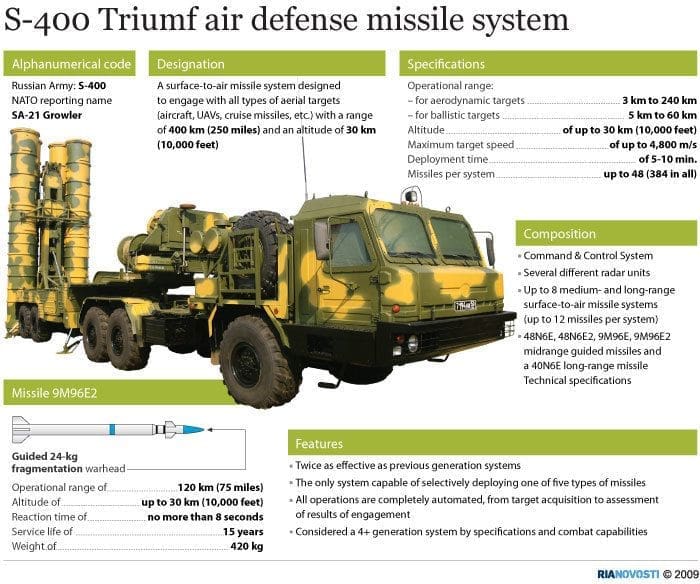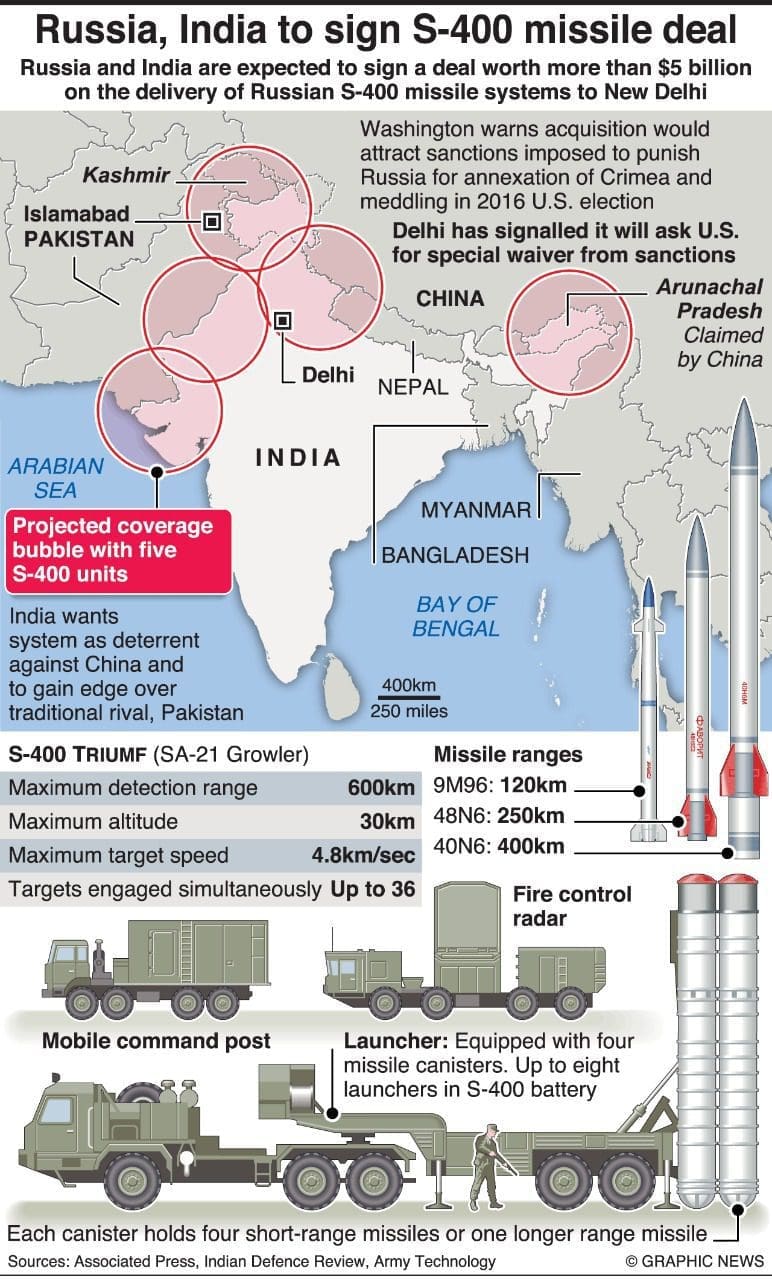
What is happening with the S-400 system?
Russia has recently started the delivery of the S-400 defense systems ordered by India to counter the deployment of the same systems by their Chinese counterparts. Two of the five systems have been delivered on the sidelines of Vladimir Putin’s visit to India. These systems are expected to be operational by the first quarter of 2022. India placed the order for five battalions of the S-400 system in 2018. This deal was valued at 5.5 billion dollars. The S-400 system is an air defense system that is superior to its western counterparts and comes at half the price.
In this article, we will decode the working of the S-400 and how the Indian S-400 varies from its Chinese counterparts.
What is an S-400 system?
A typical S-400 system is made up of four components; it consists of long-range surveillance radar, a command-and-control post mounted on a vehicle, an engagement radar, and a launch vehicle carrying the missiles. The long-range radar is the most powerful piece of surveillance equipment used by the S-400 system. It is the 91N6E radar which is an AESA (Active Electronically Scanned Array) radar with 2700 TR modules.
It is an upgraded version of the 64N6E with increased transmission power. It has a panoramic detection system and can track up to three hundred targets simultaneously at a maximum range of 600 Km.

The command-and-control post controls the various components of the S-400 systems. All major decisions from detection, identification and firing are controlled from here. The engagement radar or the fire control radar is a multifunctional radar with a range of 400 Km. There are two types of engagement radars. The 96L6E is an all-altitude radar. On the other hand, the 40V6MR is used to detect low flying targets.
S-400 and India.
The missiles form an integral part of the S-400 system. The launcher system consists of 4 canisters. There are 4 different types of missiles with different ranges. They are the 9M96E, 9M96E2, 48N6, 40N6E with a range of 40 Km, 120 Km, 250 Km, and 400 Km respectively. The canisters work on a gas ejection mechanism.
Since China is not a part of the MTCR (Missile Technology Control Regime) it can’t procure the 400 Km missile from Russia. Here India has an edge over China. India will get 5 battalions of the S-400 system. Each battalion will have 8 launchers, various radars, and a command-and-control center. India will get 40 launchers and will be able to launch 160 missiles at any given point in time. India plans to deploy 2 battalions against Pakistan (LOC) and the remaining 3 along the border with China (LAC).

The long-range radar of the system will detect the incoming target. The target will be identified as a friend or foe by the command-and-control system. If found to be foe then the launcher from which the missile is to be fired is identified according to the range. Once the missile is fired, it is directed to the target by the fire control radars and the main surveillance radar based on the real-time position of the target.
The S-400 system can track 300 targets, engage 80 targets, and fire 160 missiles simultaneously. All in all this system will prove to be a gamechanger for India’s air deterrence capabilities.
About the Author: Kanak Agarwal is a first-year Aeronautical Engineering student at Manipal Institute of Technology, Manipal. He is an avid reader and a military aviation enthusiast.



Be the first to comment